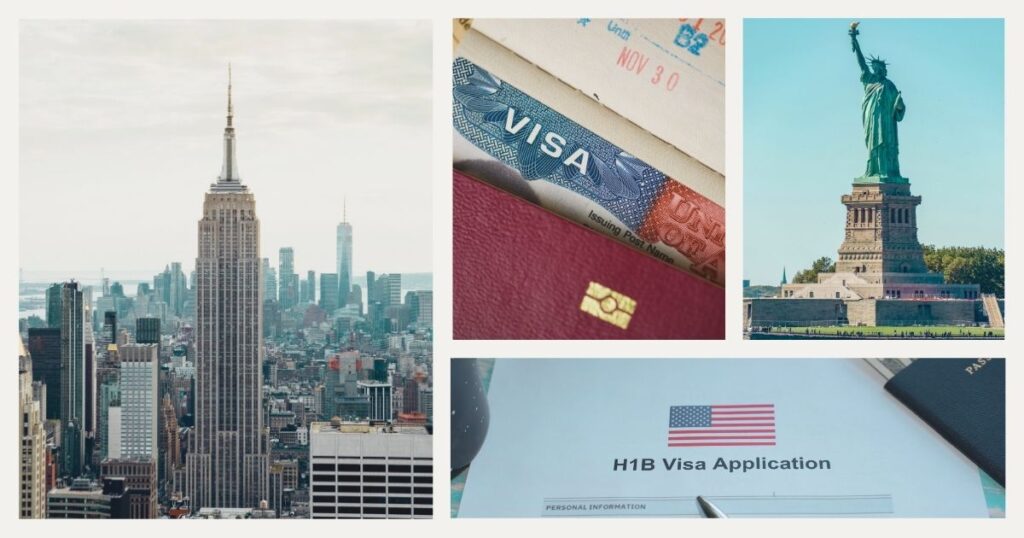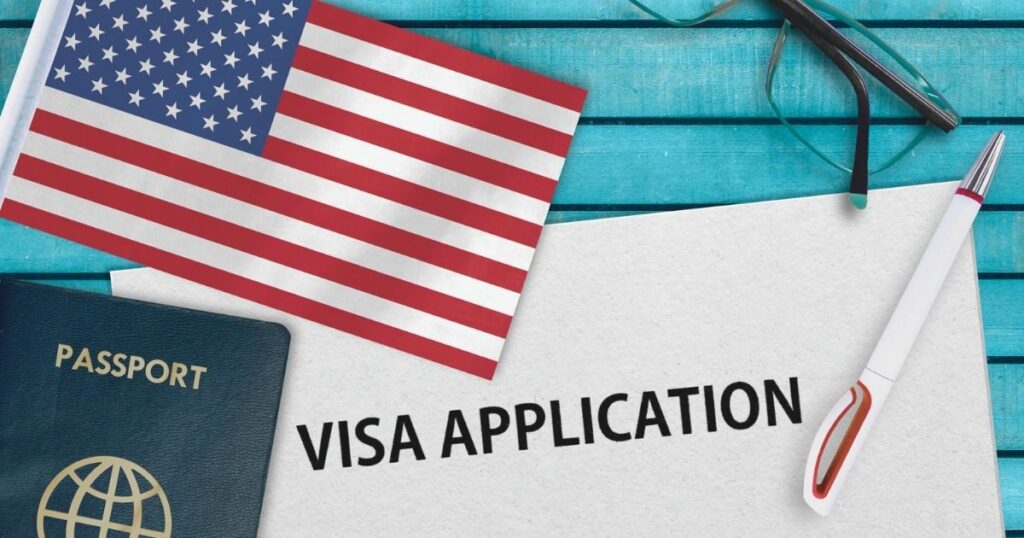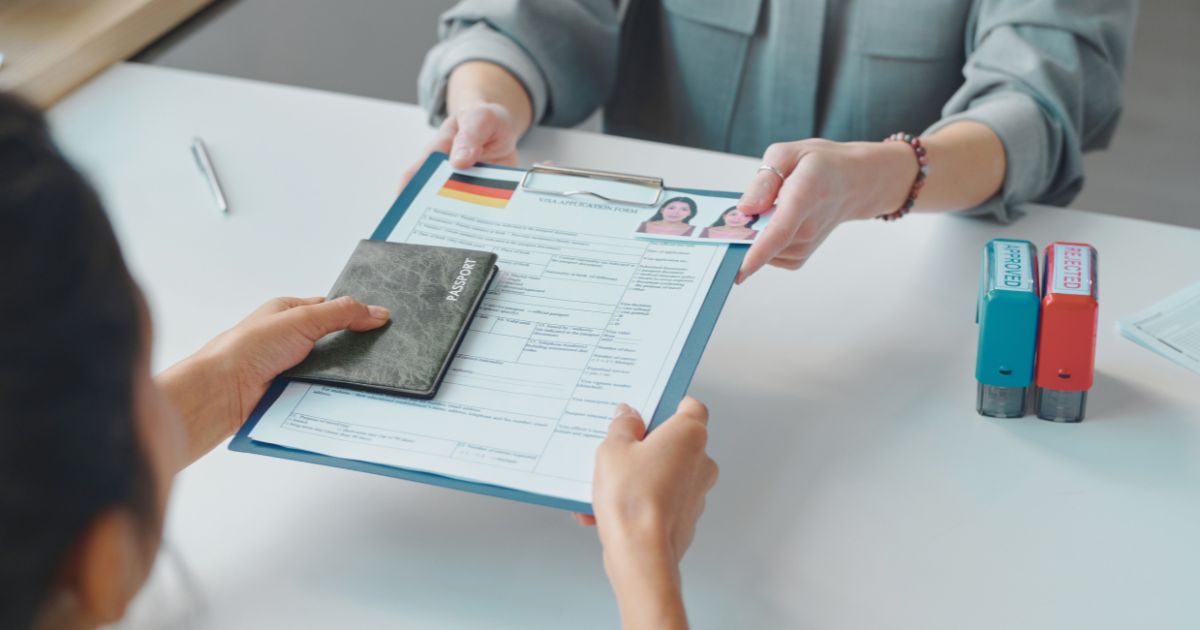Securing the freedom to legally work while exploring the United States remains one of the most challenging aspects of the digital nomad lifestyle. Unlike many countries that have created specific digital nomad visas, the U.S. immigration system hasn’t yet adapted to the realities of location-independent work, making it crucial to understand how to get a work visa in the USA within the existing framework.
The complexity of American immigration law creates a maze of visa categories, each with specific requirements and limitations. For digital nomads hoping to base themselves in the United States while maintaining their nomadic career, navigating these options requires careful planning and strategic approaches.
Understanding the U.S. visa landscape for digital nomads

Before diving into specific visa options, it’s essential to understand how the American immigration system views digital nomads and remote workers seeking work authorization.
The legal grey area of digital nomadism
The United States immigration system was designed before the era of remote work and digital nomadism, creating significant challenges for location-independent professionals. When applying for a work visa in the USA, digital nomads face a fundamental challenge: most traditional visas require a U.S.-based employer or client.
Immigration authorities generally consider any productive activity while on U.S. soil as “work,” even if your clients or employer are overseas and you’re not entering the American job market. This interpretation means that even checking work emails while visiting as a tourist could technically violate visa conditions.
For digital nomads, this creates a significant dilemma. The line between being a tourist who occasionally checks emails and a remote worker actively generating income while in the United States remains blurry. Unfortunately, immigration officers have broad discretion in making these determinations, and inconsistent enforcement creates additional uncertainty when planning extended stays in the USA.
Visitor visas vs. work authorization
Many digital nomads initially consider using a visitor visa or visa waiver (ESTA) for short stays in the United States. However, it’s crucial to understand that these options do not provide work authorization.
The B-1/B-2 visitor visa and the Visa Waiver Program explicitly prohibit “work” in the United States. While enforcement of these provisions for digital nomads who work remotely for foreign companies remains inconsistent, relying on this grey area creates significant legal risks, including potential visa violations, tax complications, and limited stay duration.
🌟 Pro tip: when discussing your plans with immigration officials, focus on your ties to your home country rather than your intent to work remotely while in the USA. Mentioning remote work can trigger concerns about your eligibility under visitor visa provisions.
Viable work visa options for digital nomads

While the U.S. hasn’t created a specific digital nomad visa category, several existing pathways can provide legal work authorization for location-independent professionals.
O-1 Visa: for individuals with extraordinary ability
The O-1 visa represents one of the most accessible options for established digital nomads with significant professional accomplishments. This category provides a work visa in the USA for individuals with “extraordinary ability” in their field, whether that’s technology, arts, business, education, or science.
Key characteristics of the O-1 visa include:
- Initial duration of up to three years with unlimited extensions
- No annual quota (unlike H-1B visas)
- Ability to work as a freelancer with multiple clients
- Flexible arrangement allowing both employee and independent contractor status
Qualifying for an O-1 work visa in the USA requires demonstrating extraordinary ability through achievements such as national awards, published materials about your work, significant contributions to your field, substantial income relative to peers, or membership in prestigious professional associations.
While the “extraordinary ability” threshold may seem daunting, successful digital nomads with established personal brands, published work, speaking engagements, or industry recognition may qualify more easily than expected.
E-2 Treaty Investor Visa
For digital nomads with entrepreneurial ambitions and capital to invest, the E-2 Treaty Investor visa provides a pathway to obtain a work visa in the USA by establishing or purchasing a U.S.-based business.
This option requires:
- Citizenship in a country that maintains a treaty of commerce and navigation with the United States
- A substantial investment in a U.S. business (typically $100,000 or more)
- At least 50% ownership of the enterprise or operational control
- A business that generates more than just enough income to support you
Digital nomads can leverage this option by establishing a U.S.-based agency or consultancy, creating a U.S. subsidiary of an existing foreign business, or purchasing an existing American business related to your expertise.
The E-2 work visa in the USA can be renewed indefinitely as long as the business continues to operate successfully, providing a stable long-term option for digital nomads looking to establish an American base. Unlike many other visa categories, there is no annual cap on the number of E-2 visas issued, making this an accessible option throughout the year without concerns about quota limitations or lottery systems.
TN Visa for Canadian and Mexican professionals
Digital nomads from Canada and Mexico have access to a streamlined work visa in the USA through the TN classification established under the United States-Mexico-Canada Agreement (formerly NAFTA).
The TN visa allows qualified Canadian and Mexican citizens to work in the U.S. in specific professional categories, including Computer Systems Analysts, Graphic Designers, Management Consultants, and Engineers. The primary limitation is the requirement for a job offer from a U.S. employer, though in some categories (particularly management consulting), this can be structured as a client relationship rather than traditional employment.
💡 Did you know? The United States is one of only two countries (along with Eritrea) that taxes its citizens and residents on worldwide income regardless of where they live or earn that income, making tax planning particularly important when considering a work visa in the USA.
Strategic approaches for digital nomads

Beyond understanding specific visa categories, successful digital nomads employ strategic approaches to secure work authorization that aligns with their lifestyle and professional goals.
Leveraging existing professional relationships
Many digital nomads successfully obtain a work visa in the USA by formalizing relationships with American clients or partners they’ve previously worked with remotely. This approach can include converting a major client into a sponsoring employer, establishing a joint venture with U.S.-based collaborators, or creating an American subsidiary of an existing business.
These arrangements can provide the formal U.S. connection required for many work visa categories while preserving the flexibility that defines the digital nomad lifestyle.
Education and training pathways
Academic and training opportunities can provide alternative routes to securing a work visa in the USA for digital nomads willing to incorporate educational advancement into their journey:
- F-1 student visas allow part-time on-campus work and optional practical training after completion
- J-1 exchange visitor programs combine training with work opportunities
- Some universities offer entrepreneurship programs that can lead to O-1 or H-1B sponsorship
While primarily educational, these pathways can include significant work components and networking opportunities that facilitate longer-term visa solutions.
Digital communication and documentation
Successfully securing and maintaining a work visa in the USA requires reliable digital communication and comprehensive documentation. As you travel between the U.S. and other locations, maintaining connectivity becomes essential for:
- Responding to USCIS requests for evidence
- Communicating with immigration attorneys
- Submitting additional documentation
- Managing visa renewal processes
- Maintaining relationships with sponsors or clients
A reliable international eSIM from Holafly ensures you maintain critical connectivity during your travels, allowing you to manage visa-related communications and documentation from anywhere without interruption. This continuous connectivity becomes particularly valuable when coordinating with attorneys or responding to time-sensitive immigration requests.
🌟 Pro tip: create a digital “visa documentation portfolio” containing all evidence of your qualifications, achievements, and business relationships. This organized resource makes it significantly easier to respond quickly to requests for evidence or prepare renewal applications for your work visa in the USA.
Final thoughts on securing a work visa in the USA
Navigating the path to a work visa in the USA as a digital nomad requires creativity, strategic planning, and often professional guidance. While the current immigration system doesn’t perfectly accommodate location-independent professionals, the options outlined provide viable pathways for those committed to including the United States in their nomadic journey.
The most successful approaches typically combine a clear understanding of visa requirements with strategic structuring of professional relationships and business operations. Rather than trying to fit the digital nomad lifestyle perfectly into existing visa categories, focus on adapting your work arrangements to align with available immigration pathways while preserving as much location independence as possible.
As remote work continues reshaping global employment patterns, the U.S. immigration system may eventually evolve to better accommodate digital nomads. Until then, working within existing frameworks requires diligence and adaptability, but can ultimately provide legal pathways to include America in your location-independent lifestyle. Nomada provides resources to help you navigate these complex immigration considerations while maintaining your freedom and professional flexibility.
Navigate the path to legal work authorization with Nomada’s visa resources 👉
Frequently asked questions about work visas in the USA
Technically, no. U.S. immigration law generally considers any productive work performed while physically in the United States as “work,” even if for a foreign employer. To legally work while in the USA, you need an appropriate work visa in the USA, regardless of where your employer or clients are based.
The “easiest” option depends on your specific circumstances. For established professionals with significant achievements, the O-1 visa often provides the most straightforward path. For entrepreneurs with capital to invest, the E-2 visa may be more accessible. Canadians and Mexicans benefit from simplified TN visa procedures for certain professions.
Processing times vary significantly by visa type and service center. O-1 visas typically take 2-4 months with regular processing, or 15-30 days with premium processing. E-2 visas generally require 2-5 months at consular posts. Planning your application at least 6 months before your intended travel provides the safest timeline.
In most cases, changing from visitor status to a work visa in the USA while remaining in the country is challenging. Most work visa applications require consular processing abroad. Some exceptions exist for certain visa categories, but these typically require departing the U.S. for a consular interview.
Working without proper authorization can result in severe immigration consequences, including being barred from entering the United States for 3-10 years, visa revocation, removal proceedings, and permanent ineligibility for certain immigration benefits. The potential long-term impact makes securing proper work authorization crucial.




